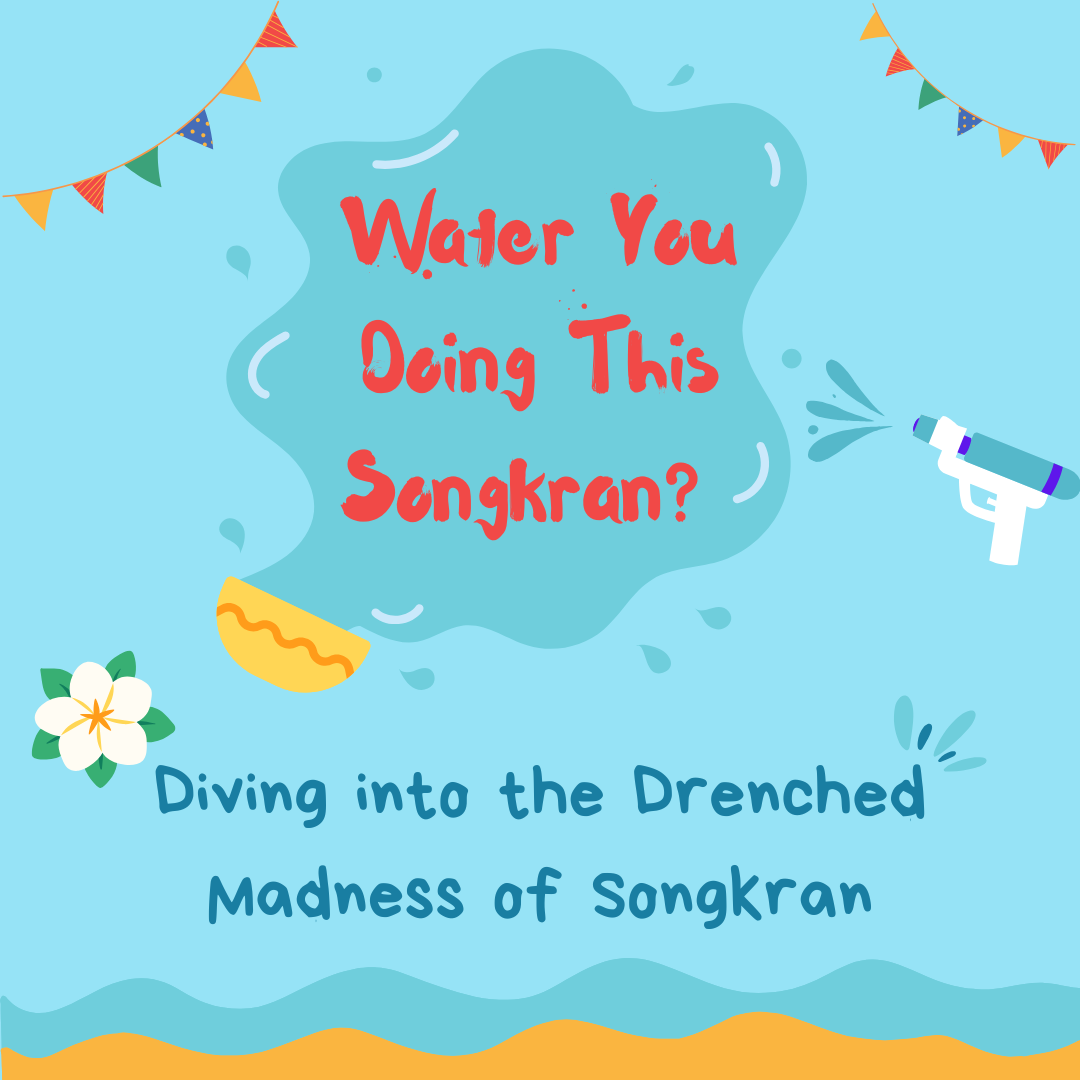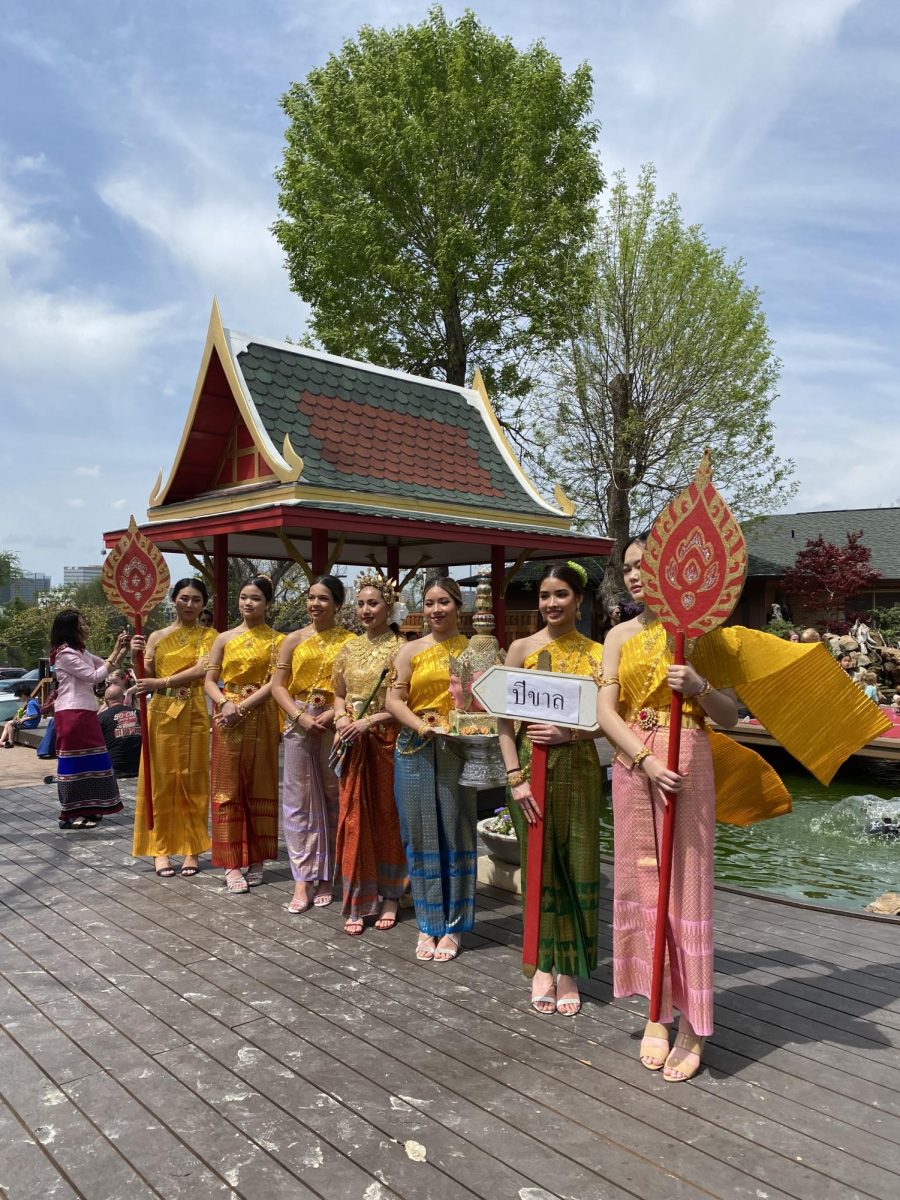As April heats up, so does one of the most exciting and refreshing holidays in the world: Songkran, Thailand’s famous New Year water festival. Known for its massive water fights and joyful spirit, Songkran is more than just a way to cool off, it’s a celebration of renewal, family, and cultural pride. Whether you’re getting drenched in a local festival or simply attending, Songkran reminds us of the deep and rich culture Thailand possesses.
One of the most popular aspects of Songkran is the massive water fights. Typically celebrated over 3 days in Thailand, people gather in the streets to spray each other with water. Not only is it a fun way to cool down in Thailand’s hot weather, but it also has a deeper meaning. The splashing of water is a sign of respect and to wash away bad luck. Songkran marks the Thai New Year, and the water fights are a way to celebrate a new beginning and welcome the new year with luck!
Songkran originated from the story of Brahma and Dhammapala. Brahma gave Dhammapala three riddles to answer. If Dhammapala could not answer them, he would have to cut off his own head; otherwise, Brahma would cut off his own head. Dhammapala could not immediately answer the riddle, but he had the ability to understand the language of birds and overheard a mother eagle tell the answers to her kids (The Legend of the Songkran).
Dhammapala then gave the correct answers to the riddles, and Brahma chopped off his own head. However, the head was too hot and would burn the earth if dropped on the ground, or dry up the ocean if left in the ocean, so Brahma’s seven daughters (who represent the seven days of the week) hid it in a celestial cave. Every year, as the sun enters the sign of the ram, one of the daughters removes the head to wash it with water and take it around the celestial Mount Meru (The Legend of the Songkran).
Each of these seven goddesses represents a day of the week, and their selection for each year’s Songkran is determined by the day on which Songkran falls according to the lunar calendar (The Legend of the Songkran).
Tungsa Devi, the Songkran goddess of Sunday, is adorned in a Pahurat garment decorated with rubies, and wears a pomegranate flower in her hair. She holds a discus in her right hand and a conch shell in her left, with figs as her symbolic food (The Legend of the Songkran).
Koraka Devi, the Songkran goddess of Monday, wears a Pahurat garment adorned with pearls and a cork tree flower in her hair. She wields a sword in her right hand and a staff in her left, riding upon a tiger (The Legend of the Songkran).
Raksot Devi, the goddess of Tuesday, is dressed in a Pahurat garment embellished with agate gemstones and crowned with a lotus. In her right hand, she holds a trident, and in her left, a bow (The Legend of the Songkran).
Monta Devi, the goddess of Wednesday, dons a Pahurat garment decorated with cat’s eye gemstones and wears a champaka flower. She carries a needle in her right hand and a staff in her left, and rides a donkey (The Legend of the Songkran).
Kirini Devi, the goddess of Thursday, wears a Pahurat garment adorned with emeralds and a magnolia flower. She holds an elephant goad in her right hand and a weapon in her left, traveling on the back of an elephant (The Legend of the Songkran).
Mahothon Devi, the goddess of Saturday, is dressed in a Pahurat garment adorned with black spinel gemstones and water hyacinth flowers. She carries a discus in her right hand and a trident in her left, and rides a peacock (The Legend of the Songkran).
The Thai word Songkran comes from the Sanskrit Sankranti, referring to the sun’s transition into a new zodiac sign. The sun’s entry into Mesha (ram) marks the New Year in parts of South and Southeast Asia. Songkran is typically celebrated in the second to third week of April, which marks the entrance of the sun into the astrological sign of Mesha. There is no exact date since this is according to the solar calendar (Songkran) .
With only about two Thai students at iUniversity Prep and just 3 out of 10 students and teachers familiar with Loy Krathong (one of Thailand’s most cherished holidays) the need to share and celebrate Thai culture poses significant. In such a diverse world, cultural representation fosters inclusivity, awareness, and mutual respect. Sharing these cultural experiences creates opportunities for meaningful conversations, learning, and connection among peers from all backgrounds. So here are some tips on celebrating Songkran as a foreigner or as someone who isn’t too familiar with Thai culture!
- Understand the Meaning
Songkran marks the Thai New Year and symbolizes cleansing, renewal, and respect. It’s not just a water fight, it’s also about paying homage to elders, visiting temples, and starting anew!
- Prepared to Get Soaked
Water fights are usually held in public areas, so be sure it’s appropriate before splashing!
Use clean water and avoid ice or forceful streams. Be mindful of elders, monks, and those who may not wish to participate.
- Show Respect
Gently pouring water over the hands of parents or grandparents is a beautiful way to ask for blessings. This tradition, Rod Nam Dam Hua, is a core part of the holiday.
- Attend an Event
Participate in traditional rituals like pouring water over Buddha statues for blessings. Make merit by offering food or flowers and practicing mindfulness. In DFW, the Wat Thai in Dallas hosts Songkran events where you can participate in pouring water in the hands of elders, buddha statues, and monks. Additionally, they also host water fights, parades, and have lots of traditional Thai food and desserts!
- Dress Appropriately
Wear traditional Thai clothing or colorful floral shirts! If you’ll be joining the water festivities, wear lightweight clothes that dry easily and won’t become see-through when wet!
Works Cited
“The Legend of the Songkran.” Nationthailand, 12 Apr. 2025, www.nationthailand.com/life/art-culture/40048663. (The Legend of the Songkran)
“Songkran.” Encyclopædia Britannica, Encyclopædia Britannica, inc., www.britannica.com/topic/Songkran . Accessed 16 Apr. 2025.











